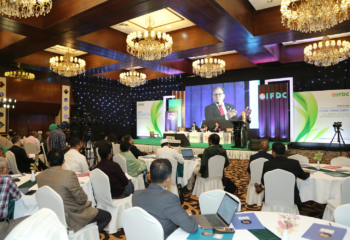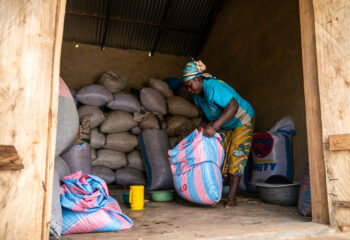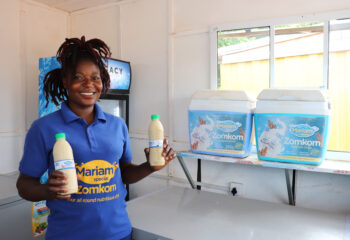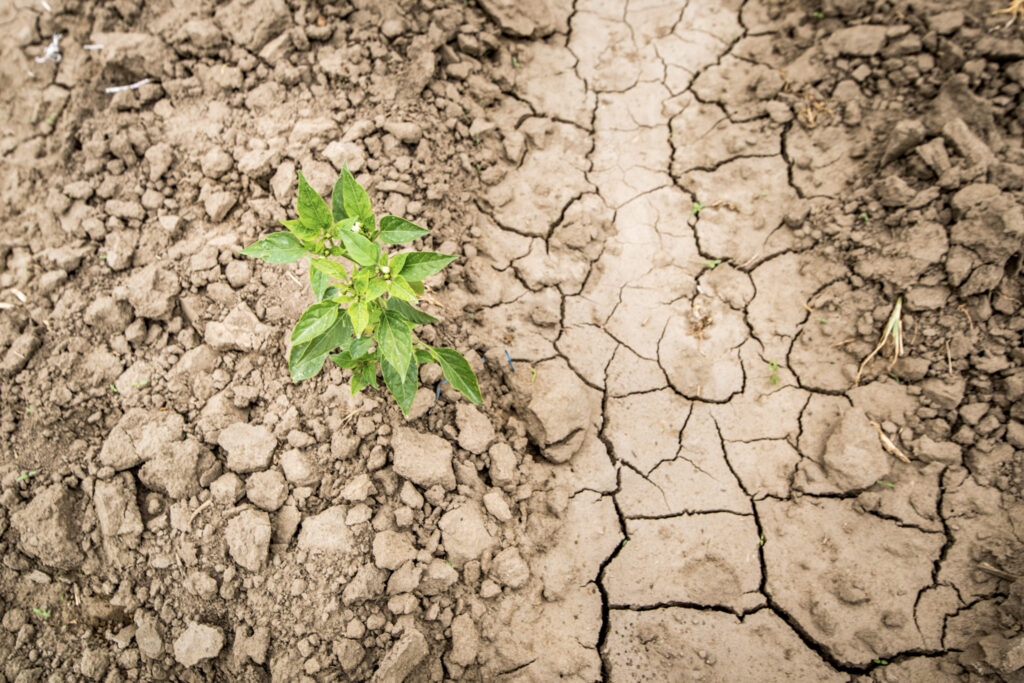
Dr. Leigh Ann Winowiecki, member of the International Fertilizer Development Center (IFDC) Board of Directors, and Dr. Ekwe L Dossa, IFDC Director of Soil Health and Agricultural Productivity, attended the United Nations Climate Conference (COP28), held November 30 to December 12, 2023, in Dubai, United Arab Emirates. We recently sat down with Leigh and Ekwe to discuss their insights from the event.
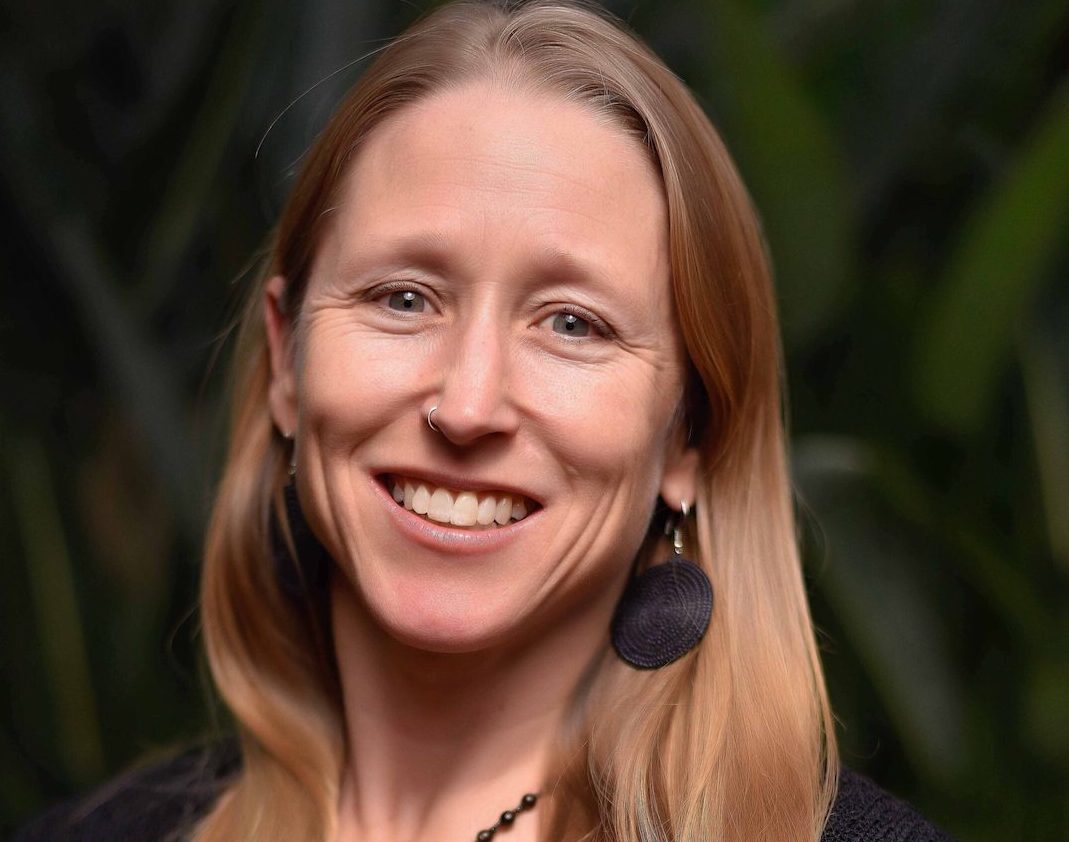

Let’s talk about the role of fertilizer in soil health and climate change. Did COP28 get it right?
Leigh: COP28 was a huge step forward for promoting sustainable food systems in climate negotiations. We saw an increase in the number of pavilions dedicated to food systems as well as the COP President saying this would be the COP of Food Systems.
This acknowledgment is a key opportunity for healthy soil. Because COP28 overlapped with World Soil Day (December 5), there was a lot of momentum around healthy soil. For example, the United Nations Convention to Combat Desertification (UNCCD) had an entire Pavilion on Land and Drought Resilience. The Save Soil Movement also hosted its own pavilion, and so did the Food Systems Partnership, which was co-sponsored by the Coalition of Action 4 Soil Health (CA4SH).
Ekwe: Most soil communications during COP28 steered away from fertilizers, turning to natural systems and regenerative agriculture. The role of fertilizers in soil health was overlooked or insufficiently covered; a few thematic discussions, such as the side event held by the French National Research Institute for Sustainable Development (IRD) on soil health for food and climate mitigation, mentioned some site-specific fertilizer formulation activities in the context of soil health, namely, the IFDC Dundël Suuf project in Senegal. More emphasis was placed on agroforestry, conservation agriculture, organic farming, etc. Conservation agriculture and regenerative agriculture are ecologically sound. However, when applied as singular solutions, their sustainability might not be guaranteed, and in fact, they do not lead to zero emissions. What is needed is an integrated approach that responds to ecosystems’ characteristics, minimizes environmental pollution, and sustains agricultural productivity to prevent expansion to fragile lands, meeting the food needs of an overgrowing population.
Fertilizers play a pivotal role in soil health, especially in fragile soil ecosystems such as those prevailing in sub-Saharan Africa. A healthy soil should be able to supply enough of the nutrients needed by the crop to reach a certain level of production. Continual removal of nutrients through successive harvests induces short- and long-term depletion of the soil nutrient pool. In this regard, mineral fertilizers are more efficient in replenishing soils because of their higher concentration of nutrients as compared to organic fertilizers and amendments.
On the other hand, when fertilizers are not managed properly, they can cause environmental pollution. Improper application of fertilizers, especially those containing very mobile nutrients, such as nitrogen (N), can induce intense leaching of nutrients into groundwater. Volatilization of N as nitrous oxide and sulfur contributes to increasing greenhouse gases and threatens the ozone layer. Nitrous oxide is the most potent threat to the ozone layer. Thus, humans must use fertilizer judiciously, applying practices like the 4Rs of Nutrient Stewardship to maximize environmental sustainability.
What were the successes for soil health in COP28?
Leigh: A big success was the inclusion of soil health in the COP28 UAE Declaration on Sustainable Agriculture, Resilient Food Systems, and Climate Action. The following is an excerpt from the declaration:
“Maximize the climate and environmental benefits – while containing and reducing harmful impacts – associated with agriculture and food systems by conserving, protecting and restoring land and natural ecosystems, enhancing soil health and biodiversity, and shifting from higher greenhouse gas-emitting practices to more sustainable production and consumption approaches, including by reducing food loss and waste and promoting sustainable aquatic blue foods.”
Ekwe: COP28’s promotion of biology and carbon sequestration in soils and ecological agriculture, with less disruption of natural systems, was supportive of soil health. However, as standalone solutions, these will not guarantee good soil health. This is particularly true if soil health is meant to support a high level of agricultural productivity to respond to population growth in an initially limited soil fertility condition.
What were the missed opportunities?
Leigh: It would be great to see healthy soil take center stage, as it is a tangible investment that can deliver on climate change adaptation and mitigation.
Ekwe: The optimization of nutrient recycling and fertilizer use should clearly be shown as part of the solution for climate mitigation.
Read the paper, “Fertilizer and Soil Health in Africa: The Role of Fertilizer in Building Soil Health to Sustain Farming and Address Climate Change.”
What concrete actions should soil health advocates take in 2024 to elevate soil health’s role in achieving the Sustainable Development Goals (SDGs)? How do we prepare for COP29?
Leigh: There is a lot happening in 2024 around soil health, including the three COPs and key conferences, such as the 9th International Symposium on Soil Organic Matter and the Centennial Celebration and Congress of the International Union of Soil Sciences, as well as the Africa Fertilizer and Soil Health Summit in Kenya.
It will be key to provide evidence-based recommendations for prioritizing the scaling of soil health, including monitoring and tracking the impact of land management on soil health. In 2024, it will be critical to provide the latest state-of-the-art data to inform investments going forward to make sure we no longer have increasing land degradation and that healthy soil practices are scaled globally.
Ekwe: The major constraints to agricultural productivity are low soil fertility, inappropriate use of fertilizers, degraded physical and chemical soil properties, low soil carbon, and water paucity. It is important to raise awareness of soil health as an investment, what soil health entails, and the steps needed to restore soil health. Our first step would be to advocate for land conservation practices — mainly soil erosion prevention measures and practices that restore or maintain soil carbon — because soil carbon is the key element that backs up soil health and justifies soil resilience. Finally, nutrient replenishment through a combination of the sound use of fertilizers, nutrient recycling, and biological means of soil fertility activation is indispensable for sustaining agricultural productivity.
Bonus question — there was a lot of talk about eliminating fossil fuels at COP28. How do you think this would impact smallholder farmers’ ability to invest in their soils?
Ekwe: Eliminating fossil fuels would definitively have a significant impact on the availability of mineral fertilizers, mostly nitrogen fertilizers, which are a major consumer of fossil fuels in their manufacture. It should be noted that smallholder farmers do not rely heavily on machinery and fertilizers in agriculture, as reflected by the low consumption of mineral fertilizers in sub-Saharan Africa. However, achieving food security in Africa would still depend on manufactured fertilizers. In that sense, banning fossil fuels would likely prompt smallholder farmers to turn to regenerative agriculture, nutrient recycling, and the use of organic residues, manure, and biological means to support agricultural productivity, even in environments with very low soil fertility. Such strategies, however, would not guarantee the sufficient agricultural productivity needed to achieve food security for the quickly growing population. This could lead to encroachment on fragile remnant land reserves, contributing to worsening environmental degradation and pollution. However, there are prospects for energy transition in the production of fertilizers, such as the recent green ammonia production using solar energy, air, and water. This green N fertilizer production process is still in the experimental phase.

